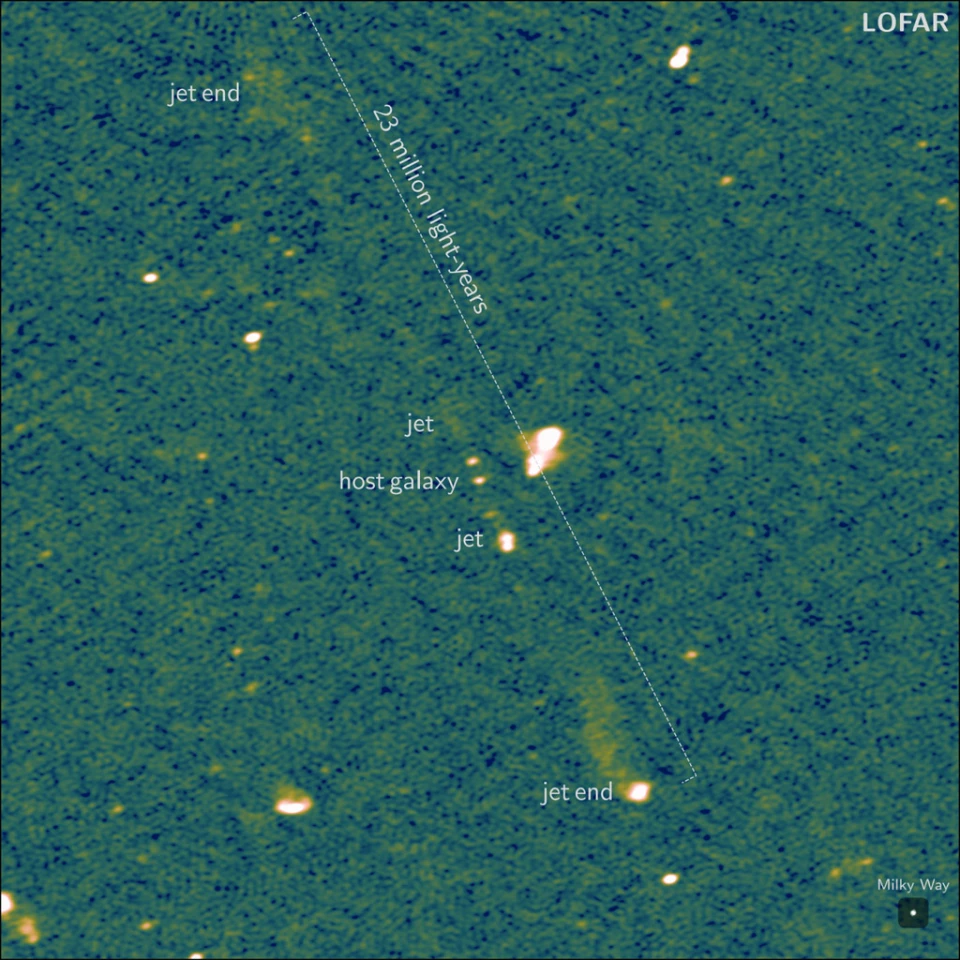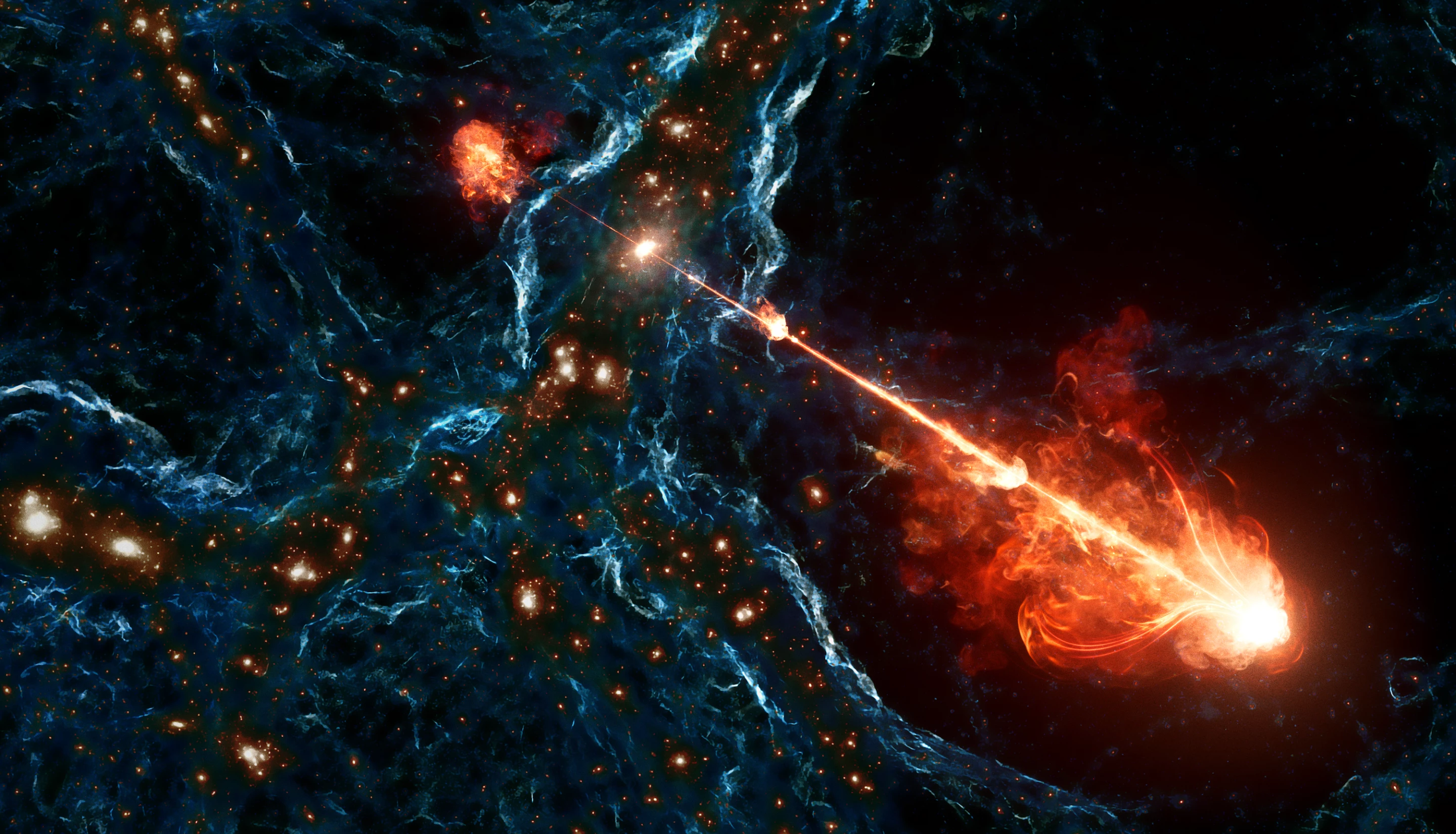Astronomers have spotted an absolutely colossal cosmic chimney that stretches as far as 140 Milky Ways lined up side by side. These jumbo jets are being blasted from a supermassive black hole.
This massive megastructure has been nicknamed Porphyrion, fittingly after a giant in Greek mythology. At the center is a remote galaxy with a supermassive black hole at its heart, which is spewing incredibly powerful jets from both ends, with a total power output of trillions of Suns.
These jets stretch for a combined 23 million light-years, or 140 times longer than our home galaxy. That makes it the largest known structure created by a single astrophysical object, the team says.
It’s pretty incredible that one object is able to influence space some 200 quintillion km away from itself.
According to the scientists, these jets have been flaring off into deep space for about a billion years in a surprisingly straight line. Exactly where it's getting all that energy from, and how it’s managed to keep its structure intact over such vast distances, remains unexplained. It was thought that 16 million light-years was around the upper limit possible for these jets.
While Porphyrion’s are comfortably the biggest black hole jets ever discovered, they’re far from the first. Not all matter that gets near a supermassive black hole is sucked in – some is warped and twisted by the incredible gravity, accelerated and fired off at near light-speed in jets from both poles at once.

Plenty of small jet systems are known already, as well as a few hundred fairly large ones. But that number has now swelled to over 10,000 after a survey using the LOFAR radio telescope. Porphyrion was the standout of that batch, and it may indicate that there are many more like it.
When black holes become active, they usually emit energy in one of two ways – as radiation or as jets. But puzzlingly, Porphyrion’s black hole is not in a jet mode, despite two colossal neon signs that might suggest otherwise.
Its timing is also weird. On closer inspection, Porphyrion was discovered to be about 7.5 billion light-years away, meaning we’re seeing it as it was 7.5 billion years ago. That’s more than half the age of the universe, and there were far more radiative-mode black holes back then.
“We may be looking at the tip of the iceberg,” said Martijn Oei, lead author of the study. “Our LOFAR survey only covered 15% of the sky. And most of these giant jets are likely difficult to spot, so we believe there are many more of these behemoths out there.”
Along with searching for more, the researchers plan to study how these jumbo jets affect their surroundings. They seem to be able to spread energy, in the form of cosmic rays, heat and magnetic fields, much farther across the universe than previously realized.
The research was published in the journal Nature. The team describes the work in the video below.
Source: Caltech





